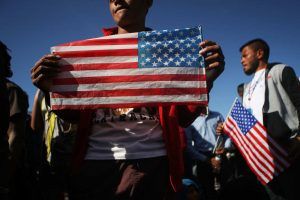Eric Levitz in New York Magazine:
 In the United States today, the rich lay claim to a higher share of our nation’s wealth than they have at any point since the Gilded Age — and foreign-born residents account for a higher share of our nation’s population than at just about any time since that same era.
In the United States today, the rich lay claim to a higher share of our nation’s wealth than they have at any point since the Gilded Age — and foreign-born residents account for a higher share of our nation’s population than at just about any time since that same era.
In his 2016 book, The Great Exception: The New Deal & The Limits of American Politics, the historian Jefferson Cowie suggests that these two developments are related. His case is simple: It is hard to implement egalitarian economic policies in the absence of working-class solidarity — and it is hard to achieve the latter in a context of mass, multi-ethnic immigration.
According to this analysis, it wasn’t purely coincidence that American workers secured themselves a “New Deal” shortly after Congress passed (profoundly racist) restrictions on immigration, nor that the New Deal consensus unraveled shortly after those restrictions were lifted in 1965. Throughout the Gilded Age, America’s industrial working class was riven by bitter tensions between protestants and Catholics; and/or between longtime Anglo-American citizens, and newly arrived Irish, German, and Jewish immigrants. These ethnic and religious tensions divided workers (and the trade union movement) between the two major parties, preventing them from consolidating power within either.
More here.
